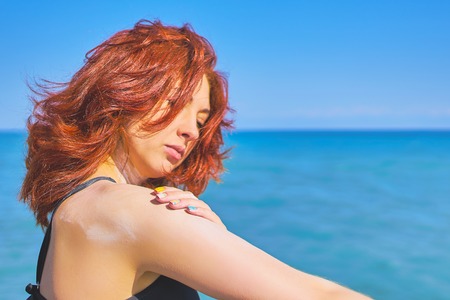1. Understanding SPF and How It Works
When choosing a sunscreen, one of the most important factors to consider is SPF, or Sun Protection Factor. But what does SPF really mean, and how does it protect your skin? Lets break it down in simple terms.
What Is SPF?
SPF measures how well a sunscreen can protect your skin from UVB rays, which are responsible for sunburns and play a key role in skin cancer development. The number you see on sunscreen bottles (like SPF 30 or SPF 50) indicates how much longer you can stay in the sun without burning compared to unprotected skin.
How Does SPF Work?
The SPF rating tells you how much of the sun’s UVB rays are blocked. Heres a general breakdown:
| SPF Level | % of UVB Rays Blocked |
|---|---|
| SPF 15 | 93% |
| SPF 30 | 97% |
| SPF 50 | 98% |
No sunscreen can block 100% of UV rays, but higher SPFs do offer more protection. However, the increase in protection becomes minimal after SPF 30.
The Importance of Broad-Spectrum Protection
SPF only measures protection against UVB rays, but UVA rays also contribute to premature aging and skin cancer. That’s why its crucial to choose a “broad-spectrum” sunscreen, which protects against both UVA and UVB rays.
Key Takeaways:
- SPF measures UVB protection, not UVA.
- A higher SPF offers more protection, but the difference becomes smaller after SPF 30.
- Broad-spectrum sunscreen is essential for complete sun protection.
Now that you understand how SPF works, lets dive into how to choose the right SPF for your specific skin type and lifestyle in the next section.
2. Different Types of Sunscreens: Chemical vs. Mineral
When it comes to sunscreen, there are two main types: chemical and mineral. Understanding the differences between these two can help you choose the best one for your skin type and lifestyle.
How Chemical Sunscreens Work
Chemical sunscreens absorb UV rays and transform them into heat, which is then released from the skin. These sunscreens contain active ingredients like oxybenzone, avobenzone, octisalate, octocrylene, homosalate, and octinoxate. They tend to be lightweight, easy to apply, and blend seamlessly into the skin.
How Mineral Sunscreens Work
Mineral sunscreens, also known as physical sunscreens, create a protective barrier on the skin that reflects and scatters UV rays. The main active ingredients in mineral sunscreens are zinc oxide and titanium dioxide. These formulas are often recommended for sensitive skin since they are less likely to cause irritation.
Key Differences Between Chemical and Mineral Sunscreens
| Feature | Chemical Sunscreen | Mineral Sunscreen |
|---|---|---|
| How It Works | Absorbs UV rays and converts them into heat | Sits on the skins surface and reflects UV rays |
| Main Ingredients | Oxybenzone, avobenzone, octisalate, etc. | Zinc oxide, titanium dioxide |
| Sensitivity | May cause irritation for sensitive skin types | Bestsuited for sensitive skin; less likely to cause reactions |
| Application | Lighter texture; blends easily into the skin | Tends to be thicker and may leave a white cast |
| Efficacy Time | Takes about 15-30 minutes to activate after application | Works immediately upon application |
| Sweat & Water Resistance | Tends to be more resistant to sweat & water | Might wash off more easily; frequent reapplication needed |
| Sustainability & Reef-Safety | Certain ingredients may harm marine life | Zinc oxide & titanium dioxide are generally reef-safe |
Which One is Best for You?
Your choice between chemical and mineral sunscreen depends on your skin type, personal preferences, and lifestyle:
- If you have sensitive or acne-prone skin: Mineral sunscreen is usually the better option as it’s less likely to cause irritation or breakouts.
- If you want a lightweight feel with no white cast: Chemical sunscreen absorbs better into the skin without leaving residue.
- If youre swimming or sweating: Many chemical sunscreens are more water-resistant than mineral ones.
- If you prefer a natural or reef-safe option: Mineral sunscreens with non-nano zinc oxide are considered safer for marine life.
- If you need immediate sun protection: Mineral sunscreen works instantly upon application, while chemical sunscreen requires time to absorb.
The Bottom Line: Finding Your Perfect Sunscreen
The best sunscreen is the one youll actually use daily! Whether you choose chemical or mineral sunscreen, make sure it offers broad-spectrum protection with SPF 30 or higher. Consider your skins needs, comfort level, and environmental impact when making your decision.

3. How to Choose the Right SPF for Your Skin
Finding the right SPF isnt just about picking the highest number on the shelf. Your skin type, daily activities, and sun exposure all play a role in determining the best sunscreen for you. Here’s how to choose wisely.
Understanding SPF Levels
SPF (Sun Protection Factor) measures how well a sunscreen protects against UVB rays, which cause sunburn and contribute to skin cancer. The higher the SPF, the more protection it offers, but no sunscreen blocks 100% of UV rays.
| SPF Level | UVB Protection | Best For |
|---|---|---|
| SPF 15 | 93% | Minimal sun exposure, everyday indoor activities |
| SPF 30 | 97% | Moderate sun exposure, daily commutes, short outdoor activities |
| SPF 50 | 98% | Prolonged outdoor activities, beach days, sports |
| SPF 100 | 99% | Extreme sun exposure, fair or sensitive skin prone to burns |
Selecting SPF Based on Your Skin Type
Your skin type plays a crucial role in determining which SPF level you need:
- Fair or Sensitive Skin: Prone to burning quickly? Opt for SPF 50 or higher.
- Medium Skin Tones: If you tan easily but still burn occasionally, SPF 30-50 is ideal.
- Darker Skin Tones: While melanin offers some natural protection, an SPF of at least 30 is still recommended.
Your Daily Activities Matter
The right SPF also depends on how much time you spend outdoors:
- Mainly Indoors: A moisturizer or foundation with SPF 15-30 should suffice.
- Causal Outdoor Exposure: If youre out running errands or walking your dog, SPF 30 is a safe bet.
- Athletes & Beachgoers: Water-resistant SPF 50+ will offer better protection.
- Skiing or High Altitudes: Higher altitudes mean stronger UV rays—opt for SPF 50+ with broad-spectrum protection.
The Importance of Broad-Spectrum Protection
No matter what SPF level you choose, make sure your sunscreen is labeled as “broad-spectrum.” This means it protects against both UVA (aging) and UVB (burning) rays, ensuring comprehensive sun defense.
The Bottom Line: Reapply Regularly!
Picking the right SPF is important, but reapplying it is just as crucial. Sunscreen should be reapplied every two hours—or more frequently if youre swimming or sweating—to maintain its effectiveness.
4. Common Sunscreen Myths Debunked
There are many misconceptions about sunscreen that can lead to improper sun protection. Let’s clear up some of the most common myths and ensure youre making the best choices for your skin.
Myth #1: People with Dark Skin Don’t Need Sunscreen
While melanin provides some natural protection against UV rays, it does not make darker skin immune to sun damage. People with darker skin tones can still get sunburned, develop hyperpigmentation, and even be at risk for skin cancer. Using a broad-spectrum sunscreen with at least SPF 30 is essential for everyone, regardless of skin tone.
Myth #2: A Higher SPF Means You’re Protected All Day
A higher SPF does offer more protection, but it doesn’t mean you can skip reapplication. Sunscreen should be reapplied every two hours, or more often if you’re swimming or sweating. Here’s a quick look at how different SPFs compare:
| SPF Level | UVB Protection | Reapplication Needed? |
|---|---|---|
| SPF 15 | 93% | Yes, every 2 hours |
| SPF 30 | 97% | Yes, every 2 hours |
| SPF 50 | 98% | Yes, every 2 hours |
Myth #3: You Don’t Need Sunscreen on Cloudy Days
Up to 80% of UV rays can penetrate through clouds, meaning you can still get sun damage even when the sun isn’t shining brightly. Wearing sunscreen daily—rain or shine—is crucial for protecting your skin.
Myth #4: Sunscreen Blocks Vitamin D Absorption
Sunscreen may reduce vitamin D production slightly, but it doesn’t block it completely. Most people get enough vitamin D through food and supplements, so there’s no need to risk sun damage by skipping sunscreen.
5. Best Practices for Applying and Reapplying Sunscreen
Applying sunscreen correctly is just as important as choosing the right SPF. Even the best sunscreen won’t protect your skin if it’s not applied properly or frequently enough. Here are some expert tips on how to apply and reapply sunscreen effectively.
How to Apply Sunscreen Correctly
Follow these steps to ensure you’re getting the best protection:
- Apply Generously: Most people don’t use enough sunscreen. You need about a shot glass (1 ounce) of sunscreen to cover your entire body.
- Don’t Forget Key Areas: Commonly missed spots include the ears, neck, tops of feet, and back of hands.
- Use Before Sun Exposure: Apply sunscreen at least 15-30 minutes before going outside to allow it to absorb into your skin.
- Layer with Other Products: If you use skincare or makeup, apply sunscreen as the last step in your morning routine before makeup.
How Often Should You Reapply?
Sunscreen isn’t a one-and-done application; it needs to be reapplied regularly. Use this guide for the best reapplication practices:
| Situation | Reapplication Frequency |
|---|---|
| Everyday activities (minimal sweating) | Every 2 hours |
| Sweating or swimming | Every 40-80 minutes (check label for water resistance) |
| If using makeup with SPF | Add powder sunscreen or setting spray with SPF every 2 hours |
Tips for Incorporating Sunscreen into Your Daily Routine
- Make It a Habit: Keep sunscreen near your toothbrush so you remember to apply it every morning.
- Cary a Travel-Sized Sunscreen: Keep a small bottle in your bag for easy reapplication throughout the day.
- Select Multi-Purpose Products: Consider moisturizers or foundations with SPF for added protection.
- Dress for Sun Protection: Wear wide-brimmed hats, sunglasses, and UV-protective clothing along with sunscreen.
Sunscreen is one of the easiest ways to protect your skin from premature aging and skin cancer. By applying it correctly and reapplying as needed, you can enjoy the sun safely while keeping your skin healthy.


